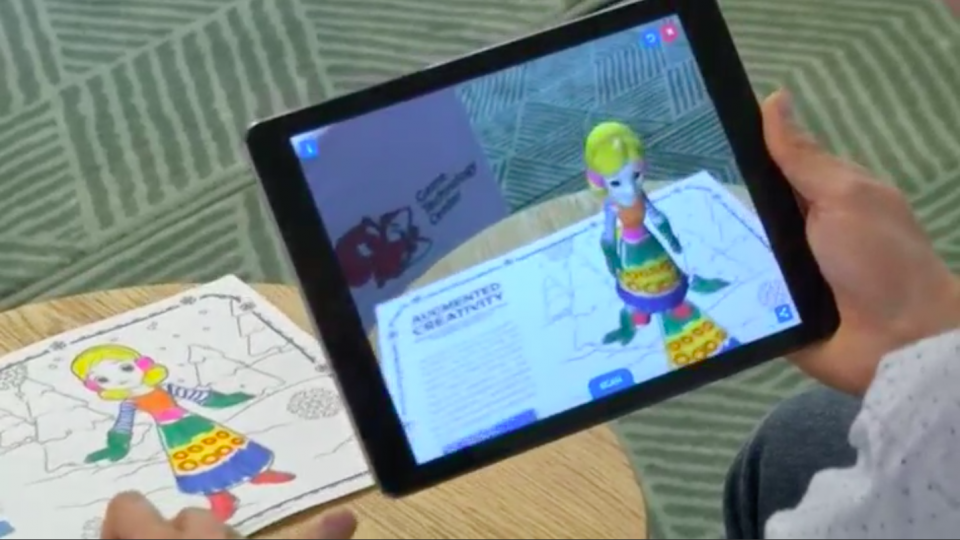
ZURICH, Switzerland (Reuters) – The colouring book has been a childhood favourite for many years and is often a first opportunity for creative expression.
But Swiss-based researchers are using augmented reality (AR) to put a magical new spin to the traditional pastime.
Children use pens or crayons to colour in a cartoon-like character, such as a princess or an octopus. When a tablet running their app is held over the finished picture the character bursts into life with the colours transferred to a three-dimensional, moving cartoon character.
The project is a collaboration between ETH Zurich and Disney Research. The designers say they want to re-engage children with a creative activity that may be waning in popularity with the proliferation of digital devices.
“Colouring is one of childhood’s earliest activities and we try to enhance this through augmented reality. With our app you can colour a character and then looking through the iPad this character comes alive with the same colour,” said Fabio Zünd, from the Game Technology Center, an ETH Zurich spin-off.
The intelligent algorithm can even predict how the coloured-in characters look in areas not visible. So, rotating the paper also spins the image on the tablet screen, revealing a character coloured-in all the way around.
As paper colouring books don’t lie perfectly flat and can bend as a child colours the page, the team developed a deformable surface tracking method to monitor surface changes and keep the virtual character displayed on the tablet screen correctly oriented with the book’s page.
The team from Zurich has also developed an AR game to help stimulate a child’s auditory senses by ‘building’ a virtual band using character cards. Each card has either a cartoon character or an instrument on it. When the card is placed in front of the app, the character starts singing or the instrument starts playing. Adding more cards builds up a layered musical sound, with the user even able to change the style of music. And just like a live concert, the volume increases or decreases depending on how far away your device is from the band.
Another app wants to make visiting art galleries more playful and interesting by giving kids the power to manipulate paintings on the tablet’s screen in real-time.
These AR games, however, won’t be appearing on any shopping lists just yet. They’re still only prototypes designed to test out augmented reality’s potential applications, according to Bob Sumner from ETH Zurich.
“We’re using augmented reality to enhance creative activities; that fits into our wider research mission which is really about exploring game technology as a means to understand human behaviour,” Sumner said.
“I really believe in the wider scope, augmented reality is going to touch nearly every business world-wide,” added Sumner.
Augmented reality, a mix of the real and digital worlds, is best known from the hit smartphone game Pokemon Go where players use their phones to capture animated characters that appear in real locations.
In April, Mark Zuckerberg said Facebook was an obvious hub for businesses to reach people and experiment with augmented reality. Eventually, he said, people would use augmented reality on eyewear, although he did not give any details about the possible Facebook hardware.







